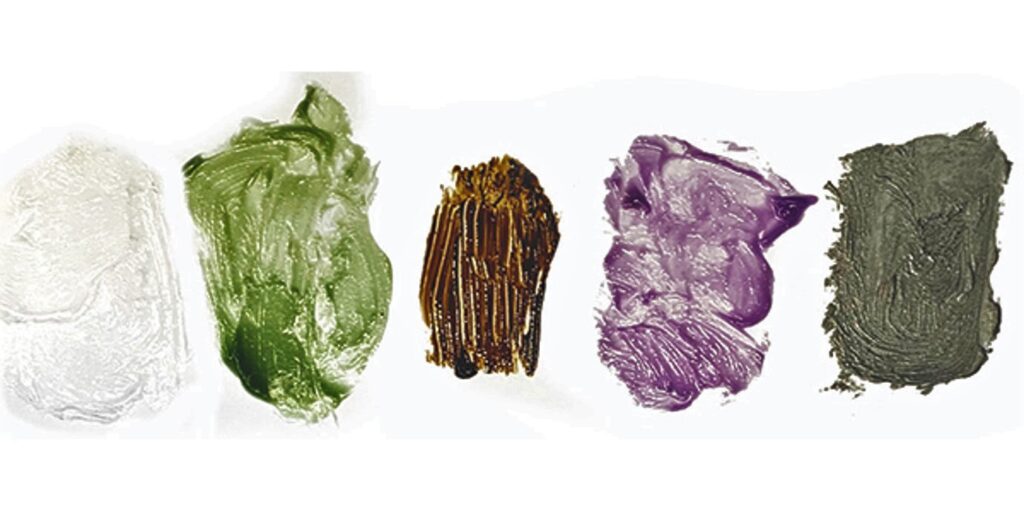Overview
Brake Lubricant or Brake Grease, as it is also known, is used to lubricate the metal areas of the braking system that deal with moving parts. Brake Grease is a special mix of a base, additives and solids designed for being used exclusively in a braking system. Many base materials have been used over the years, but Synthetic and Silicone have become the 2 favorites. By mixing one of the bases with additives and solids you can change the characteristics of the blend for different purposes. This is why there are many different types of Brake Grease on the market today.
Three Main Components
- Base – Synthetic or Silicone
- Rust and Corrosion Inhibitors
- Solids – Ceramic, Molybdenum, PTFE, Graphite

Base Lubricants
Synthetic Lubricant
“Synthetic” is a term used to describe a ”man-made” base fluid vs. being made with a petroleum base. When it comes to Lubricants that can mean it was made with either a synthetic oil or synthetic thickeners in a petroleum base. This increases the temperature rating, lubrication properties, and longevity when compared to conventional lubricants.
Silicone Lubricant
Silicone Lubricants start off with a Silicone oil. They have good sealing properties, which makes them waterproof, have a wide temperature range, and good longevity. It is also safe for use with rubber and not contributing to rubber swell or breakdown.
Common Additives
Ceramic
Adding ceramic lubricant increases the temperature rating from around 500°F to around 3000°F. Ceramics added into the formula also help with noise reduction throughout the braking system.
Molybdenum
Moly is a lubricant additive that can handle high temperatures and pressures. It will not evaporate or “Burn off” over time and will not attract or hold dirt. It usually has a temperature rating up to 500° F.
PTFE
Street Name “Teflon” has a low coefficient of friction, High Melting Point, Good Temperature Resistance, and safe for most rubber compounds. It is good for metal-to-metal lubrication properties.
Graphite
Similar in function to PTFE it has a low coefficient of friction, High Melting Point, Good Temperature Resistance, and safe for most rubber compounds. It is good for metal-to-metal lubrication properties.
Brake Lubricant or Brake Grease, as it is also known, is used to lubricate the metal areas of the braking system that deal with moving parts. Brake Grease is a special mix of a base, additives and solids designed for being used exclusively in a braking system. Many base materials have been used over the years, but Synthetic and Silicone have become the 2 favorites. By mixing one of the bases with additives and solids you can change the characteristics of the blend for different purposes. This is why there are many different types of Brake Grease on the market today.
Three Main Components
- Base – Synthetic or Silicone
- Rust and Corrosion Inhibitors
- Solids – Ceramic, Molybdenum, PTFE, Graphite

Base Lubricants
Synthetic Lubricant
“Synthetic” is a term used to describe a ”man-made” base fluid vs. being made with a petroleum base. When it comes to Lubricants that can mean it was made with either a synthetic oil or synthetic thickeners in a petroleum base. This increases the temperature rating, lubrication properties, and longevity when compared to conventional lubricants.
Silicone Lubricant
Silicone Lubricants start off with a Silicone oil. They have good sealing properties, which makes them waterproof, have a wide temperature range, and good longevity. It is also safe for use with rubber and not contributing to rubber swell or breakdown.
Common Additives
Ceramic
Adding ceramic lubricant increases the temperature rating from around 500°F to around 3000°F. Ceramics added into the formula also help with noise reduction throughout the braking system.
Molybdenum
Street Name “Teflon” has a low coefficient of friction, High Melting Point, Good Temperature Resistance, and safe for most rubber compounds. It is good for metal-to-metal lubrication properties.
Graphite
Similar in function to PTFE it has a low coefficient of friction, High Melting Point, Good Temperature Resistance, and safe for most rubber compounds. It is good for metal-to-metal lubrication properties.
